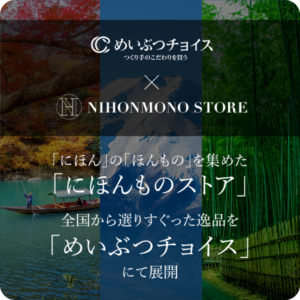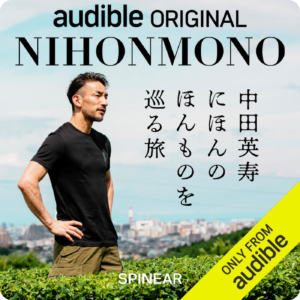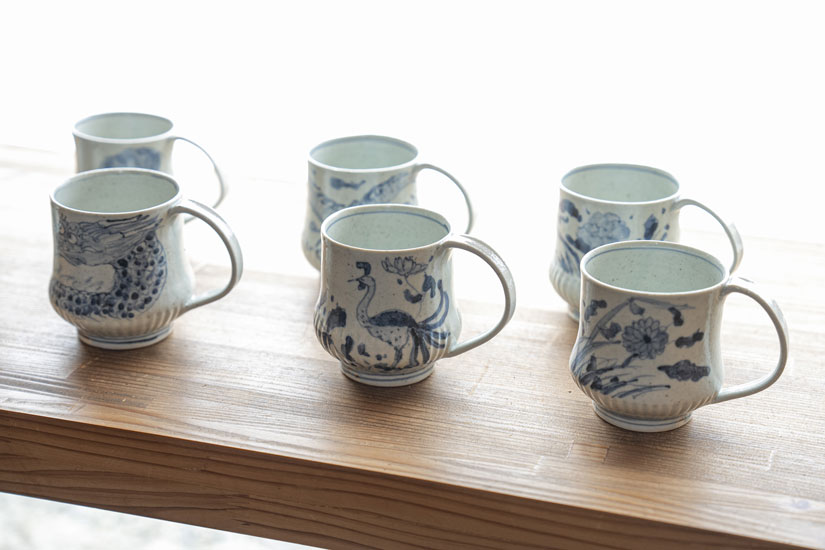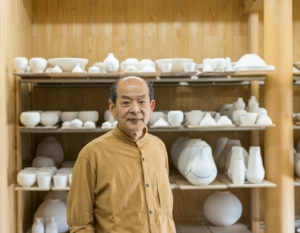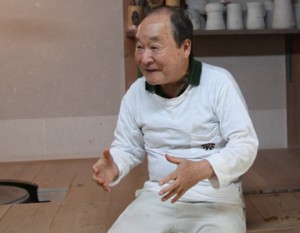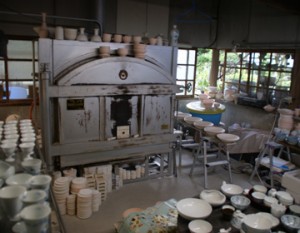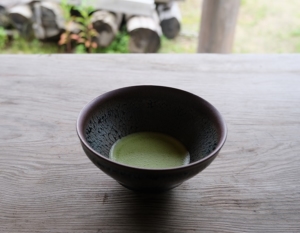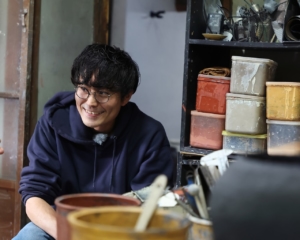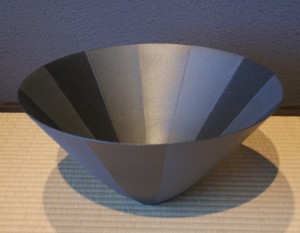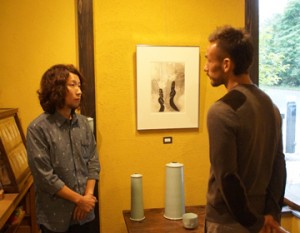Kikigama is located in Chikushino City, where Amagaisan (Mt. Amagaisan) spreads out in the midwestern part of Fukuoka. Takaaki Yoshida, who has a studio and gallery in a lush residential area, does everything by himself, from clay making to potteries, painting, and kiln firing. His pottery has the flavor of old pottery and attracts many people.
From Graphic Design to Vessel Making
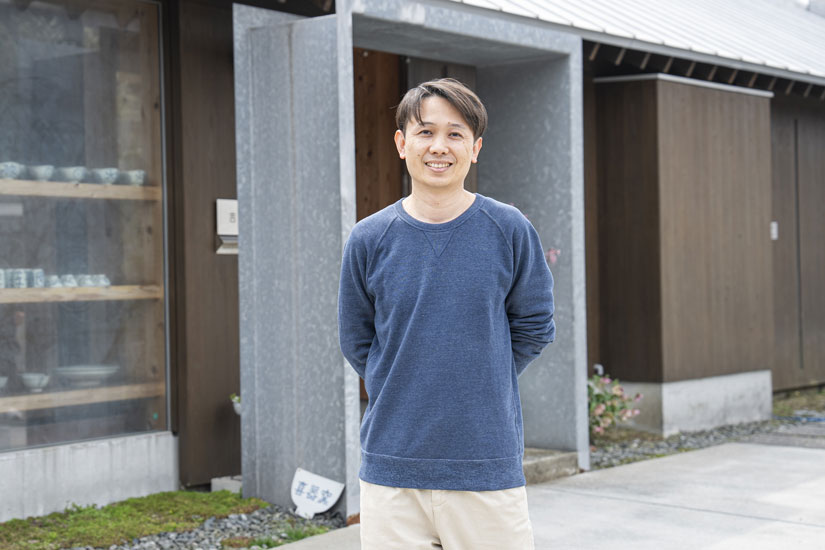
Mr. Yoshida says, “I started late as a pottery maker. First, he majored in graphic design at university, but during his studies, he became attracted to three-dimensional industrial design instead of two-dimensional graphic design. After graduation, he wanted to do work that incorporated graphic design into three-dimensional objects, and that’s when he came across vessels.
I felt a sense of luck that Saga, a production center of tableware, was located next to Fukuoka, where I was born and raised,” he said. At the time, he knew nothing about pottery and spent two years at a pottery college in Arita, Japan, learning the basics. After graduating from the university, he went to Shigaraki in Shiga Prefecture to study pottery making until he was satisfied with his decision to pursue this career. While studying at the “Shiga Prefectural Ceramic Cultural Park,” which houses studios of ceramic artists from Japan and abroad, he immersed himself in the production of chair objects, hoping to create art that could actually be used.
Training at a Karatsu Pottery Became a Turning Point
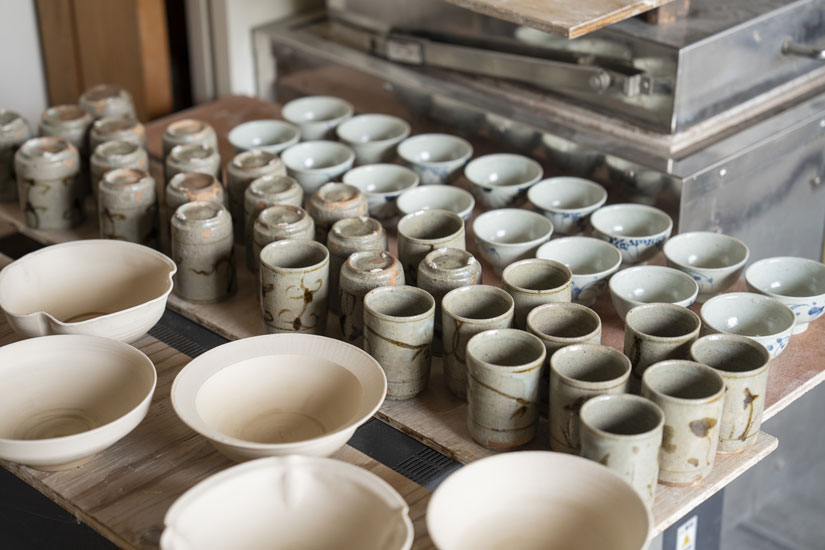
Mr. Yoshida says, “Apprenticeship at the Tenpyo Kiln in Karatsu was a turning point for me. The kiln was known for its old-fashioned, antique-style pottery, and produced a wide variety of pottery with wonderful painting techniques, including “Sometsuke,” in which blue is the only color used, and “Iroe,” in which a variety of colors are used. Mr. Yoshida, who has been pursuing his own path in graphic design and art production, says, “I was very much influenced by my teachers, Mr. and Mrs. Shingo and Satsuki Oka. It was here that the foundation for Mr. Yoshida’s tasteful pottery was formed.
Pursuing his own style after becoming independent
After becoming independent in 2007, Mr. Yoshida spent his days going deep into the mountains of Arita to search for materials such as potter’s stone and clay, hoping to use the same materials as those used by his predecessors 400 years ago. At the time, there were not many potteries that started with the search for materials, so I thought there was room for me,” he says.
But that was like a sushi chef growing rice, catching tuna on a boat, and making sushi. It takes too much time and costs too much, and if you do that, you have to make expensive items such as sake and tea utensils to make a profit,” he said. Through a process of trial and error, Mr. Yoshida turned his attention to making everyday vessels that he truly wanted to produce.
Aiming to create vessels that look like old pottery
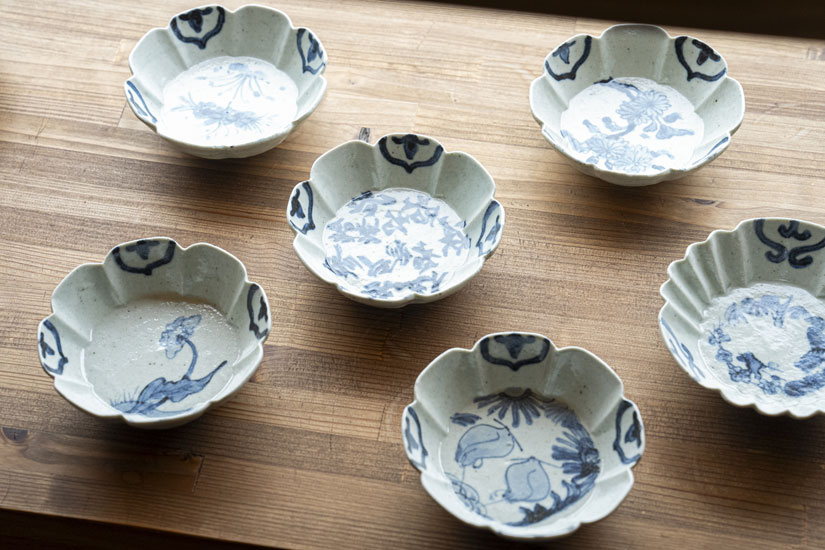
Yoshida’s vessels are made of “porcelain,” a clay made from crushed stones, but their warm, natural form gives the impression of softness, just like ceramics.
The warm, natural form of his vessels gives them the soft impression of ceramics, and the slightly bluish texture of his antique-like pieces is the result of mixing clay from Amakusa, Kumamoto, with crushed stones he has dug up.
Today’s clay is too white and tasteless,” he says. If you look at old pottery pieces, they were more uneven and had more expression because there was no such thing as a de-ironing machine to remove the iron like today. I add stones that I have dug up myself with the intention of making them a little dirty so that they don’t become too clean,” says Yoshida. The glaze is made of crushed ash from stones dug in the Arita area. He makes his vessels using the traditional combination of stone and ash.
When using the potter’s wheel, Yoshida emphasizes the importance of momentum. Many people are highly skilled at carefully turning a potter’s wheel, but I think it is interesting when I let my momentum guide my work. As my master told me, I am attracted to pieces that are not too tightly made, but have a “blank space” for people to enter,” he says.
Painting in blue using old-fashioned gosu
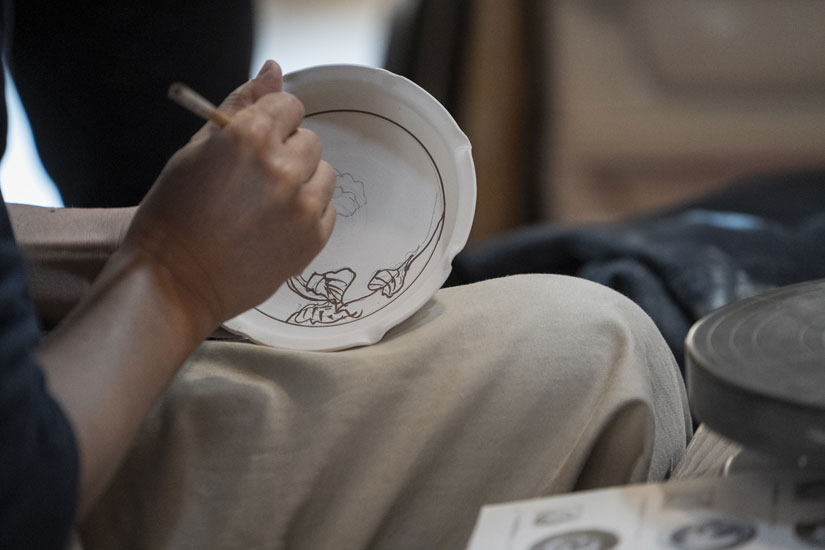
The painting of the pieces cannot be overlooked when talking about “Kikkigama. Mr. Yoshida chose an old technique called “Somezuke,” in which cobalt-containing pigments called gosu are used. When fired, the finished product has a simple blue color.
However, the painting is only one part of the vessel. I try to make the lines live,” he says, “even if they are a little off or overhang, so that the painted surface has a sense of blank space. The paintings are traditional patterns such as small patterns, chrysanthemums, birds and animals, and so on, like Ko-Imari paintings from the Momoyama period to the beginning of the Edo period. The lively patterns created by the vigor of the brush are inspiring just by looking at them.
What is surprising is that Mr. Yoshida has decided to “never paint the same pattern. It is said that a craftsman is highly skilled only if he paints dozens or hundreds of the same picture, but I am not suited to keep painting the same thing,” says Yoshida, laughing. Each mug has a different pattern, so it is fun to choose which one suits you best.
Yoshida invented the “prime number design,” which represents prime numbers in Chinese characters.
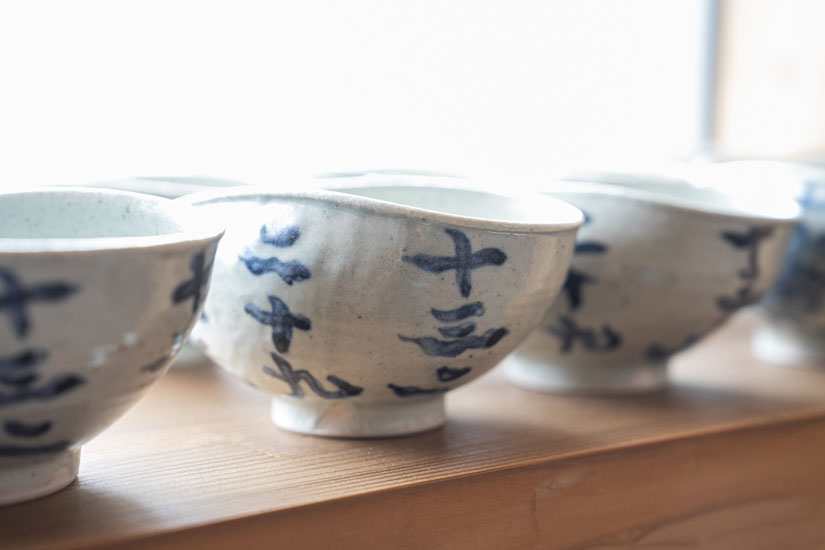
While there are many other potteries besides Kikki-gama that make pottery that looks like old pottery, there is one pattern that Mr. Yoshida has created. He created the “prime number pattern,” in which prime numbers are randomly written in Chinese characters. Prime numbers are “undivisible,” aren’t they? I have always loved prime numbers because I feel the emotion of the human heart that cannot be divided,” says Mr. Yoshida. Another popular work is the humorous “Ku (bitterness) Laughing Text,” in which the hiragana character “Ku” is lined up in a row. Ms. Yoshida’s light sensitivity makes the familiar seem fresh.
Mr. Yoshida’s Challenge Continues as He Eyes the World
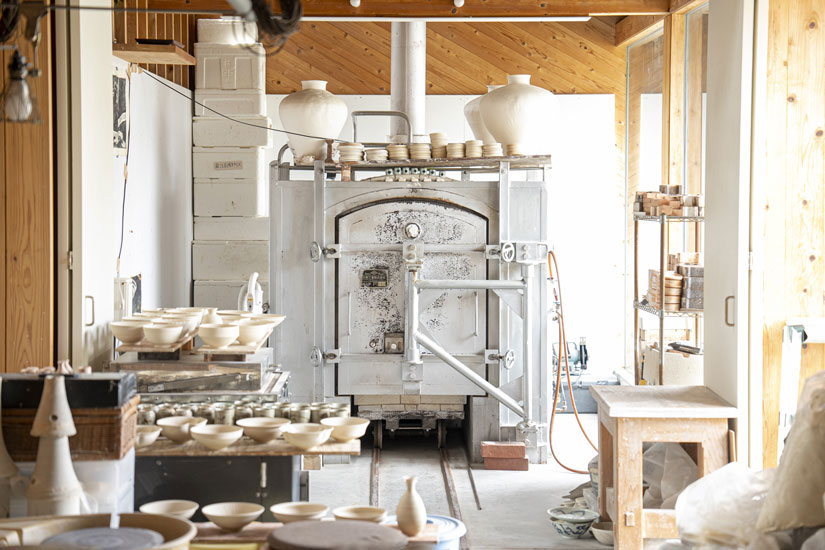
When asked about his future plans, Mr. Yoshida’s eyes light up as he says, “Right now, I am using a gas kiln, which is easy to reproduce and produces vessels exactly as I want, but eventually, I would like to try a wood-fired kiln. It takes more time and effort, but a wood-fired kiln is the best way to get closer to traditional pottery. Because firing is done by natural forces and cannot be controlled, the clay and glaze sometimes change in unexpected ways, and you can expect to make things that are beyond your imagination. Also, overseas customers seem to find added value in the traditional wood-fired kilns,” he says.
Yoshida’s pottery has received many orders from overseas, including Kanto, Kansai, and the United States, and there is currently a two-year waiting list. The texture of his pottery, which looks as if it were made 400 years ago, and his lively painting have captured the hearts of people living today, transcending national borders. Today, in his small workshop, daily vessels that enrich people’s lives are being created.
